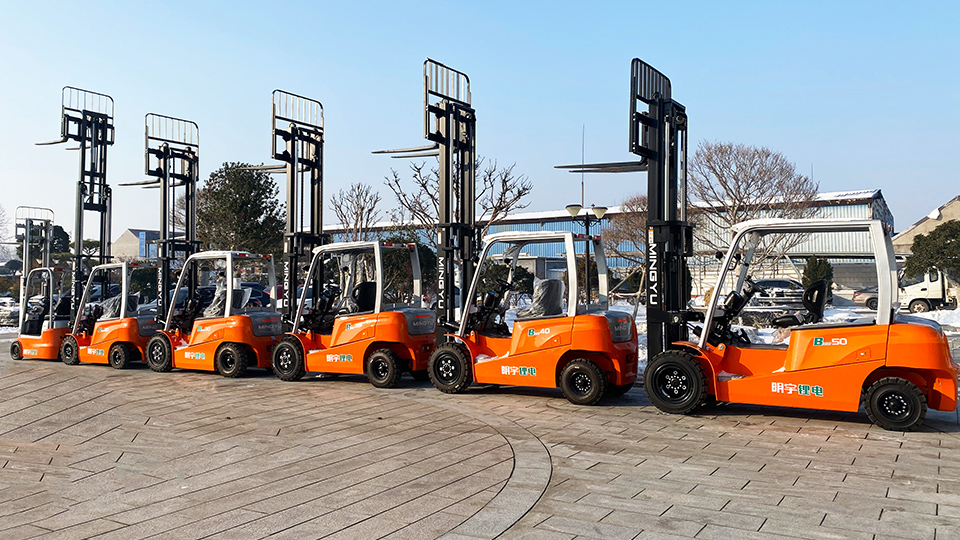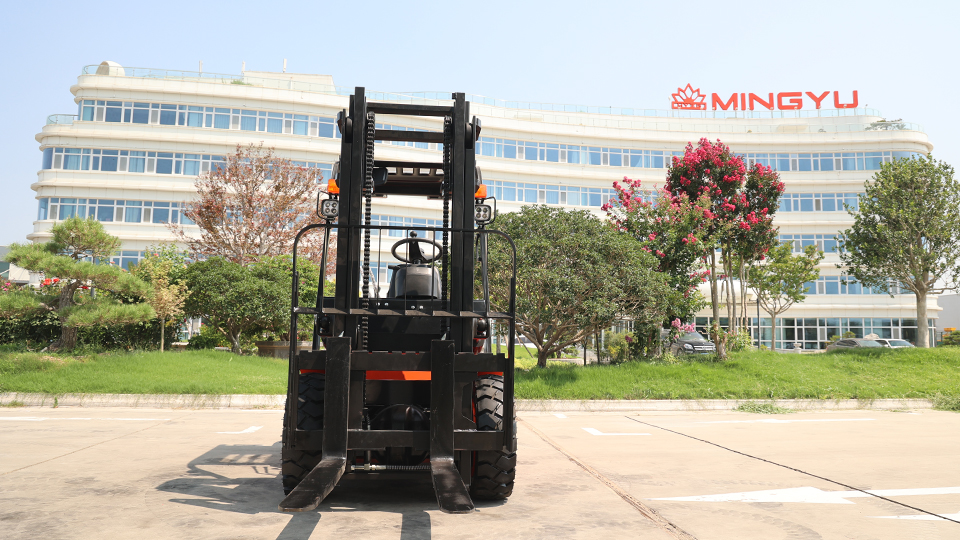
Can You Leave Keys in a Forklift? A Comprehensive Technical Analysis of Key Management, Safety Regulations, and Risk Mitigation
The simple act of leaving keys in the ignition of a forklift (or powered industrial truck) when it is unattended is a deceptively critical topic in workplace safety. While seemingly convenient, this practice is strictly regulated and profoundly impacts occupational safety, risk management, and insurance liability. This technical article explores the regulatory mandates, the underlying safety principles, the consequences of non-compliance, and the best practices for key management in material handling environments.
1. Regulatory Mandates: The Legal Imperative for Key Removal
The practice of key removal is not merely a guideline; it is a mandatory requirement enforced by major occupational safety and health organizations globally. The primary focus of these regulations is to prevent unauthorized use and accidental operation—two leading causes of forklift-related accidents, injuries, and fatalities.

1.1. Occupational Safety and Health Administration (OSHA) - United States
In the United States, the governing regulation is set forth by the Occupational Safety and Health Administration (OSHA) under the Powered Industrial Truck Standard (29 CFR 1910.178).
The critical section governing unattended vehicles is 1910.178(m)(5), which explicitly states the operational requirements when a truck is left unattended:
1910.178(m)(5)(i): When the operator of an industrial truck is dismounted and within 25 ft (7.6 m) of the truck still in his view, the load engaging means shall be fully lowered, controls shall be neutralized, brakes set, and power shut off.
1910.178(m)(5)(iii): When the operator of an industrial truck is dismounted and further than 25 ft (7.6 m) from the truck, or whenever the truck leaves the operator's view, the load engaging means shall be fully lowered, controls shall be neutralized, brakes set, and power shut off. Wheels shall be blocked if the truck is parked on an incline.
While the regulation does not explicitly use the word "key," the requirement for "power shut off" is interpreted by OSHA, industry consensus standards (like ASME B56.1), and best practice as the mandatory removal of the key to ensure the power circuit cannot be reactivated. Removing the key is the only failsafe mechanism that physically prevents unauthorized restart and ensures the power is "shut off" beyond simply turning the switch. OSHA guidance and compliance directives universally require the key (or another means of primary control) to be removed when the vehicle is unattended.
1.2. European and International Standards
Similar strict requirements exist internationally:
European Union (EN Standards): European directives and national regulations (like PUWER in the UK) require equipment to be isolated from energy sources when unattended, which translates directly to key removal for powered industrial trucks.
Canadian Standards: Occupational health and safety (OHS) legislation across Canadian provinces typically mandates the removal of keys, lowering of forks, setting of brakes, and neutralizing of controls when a truck is left unattended.
The Consensus: Across all major regulatory bodies, the consensus technical interpretation is that to achieve the mandatory state of power shut off and prevent unauthorized use, the key must be removed from the ignition.
2. Defining "Unattended": The 25-Foot Rule and Line of Sight
The regulatory requirement hinges on the definition of "unattended." In the material handling world, "unattended" is a specific technical status governed by the OSHA 25-foot rule (or equivalent national standard).
2.1. The 25-Foot and Line-of-Sight Threshold
A forklift is deemed unattended if any of the following conditions are met:
Distance: The operator is more than 25 feet (7.6 meters) away from the powered industrial truck.
View: The truck is not in the direct line of sight of the operator (e.g., the operator walks around a racking aisle, behind a curtain wall, or into an office).
If the truck is unattended, the full procedure is mandatory: Forks lowered, controls neutralized, parking brake set, power off, and key removed.
2.2. The 'Within View' Exception (The Key Debate)
If the operator steps off the truck but remains within 25 feet AND in direct view, the truck is technically not defined as unattended under the strictest regulatory definition.
In this scenario (e.g., operator steps off to check a pallet at the base of the mast), the mandatory actions are: Forks lowered, controls neutralized, parking brake set, and power shut off. While key removal is strongly recommended as a best practice, the focus is on the power being shut off. However, most safety managers and compliance experts insist on key removal even in this short-term scenario because:
It creates a single, non-negotiable standard (key removed) for every dismount, eliminating confusion.
It prevents an accidental restart if the operator is momentarily distracted and steps away further than 25 feet without realizing it.
It addresses the risk of secondary operators (untrained employees) seeing an "available" truck.
3. Risk Mitigation: Why Key Removal is a Critical Safety Barrier
The rule mandating key removal functions as a vital safety interlock against three primary categories of risk:
3.1. Risk of Unauthorized Use (Theft and Tampering)
Juvenile or Untrained Operators: The greatest risk is a non-certified employee, visitor, or—in external storage yards—a juvenile, climbing into the seat and attempting to operate the truck. With the key left in, the vehicle can be started immediately, leading to a loss of control, striking personnel, damaging inventory/infrastructure, or driving off a dock.

Vandalism/Tampering: A key left in allows access to the electrical system, potentially enabling malicious damage to the truck or the facility.
3.2. Risk of Accidental Operation (Runaway or Unintended Movement)
Vibration/Contact Activation: In older or poorly maintained equipment, a key left in the "on" position can, theoretically, be jarred or vibrated into a "start" position, especially in trucks with manual chokes or aging ignition switches.
Curious Employees: An employee might climb into the seat for a non-work reason, bump the hydraulic levers, or accidentally release the parking brake. If the key is in and the power is not truly off, unintended movement, lifting, or tilting can occur, leading to load instability or striking people nearby.
3.3. Liability and Insurance Implications
Non-compliance with OSHA 1910.178—specifically the key removal requirement—can have devastating liability consequences following an accident:
Regulatory Penalties: OSHA can issue citations and substantial fines for willful or serious violations of the standard.
Negligence Claims: In the event of a severe injury or fatality, failure to follow the explicit safety standard (key removal) constitutes a clear finding of negligence on the part of the employer. This can lead to multi-million dollar civil lawsuits and, in extreme cases, criminal proceedings against managers.
Insurance Voids: Insurance carriers often view non-compliance with fundamental safety standards as grounds to challenge or increase the cost of workers' compensation and liability claims, significantly increasing the employer's direct financial burden.
4. Technical Solutions and Best Practices for Key Management
While the physical key is the traditional control mechanism, modern fleets are increasingly moving toward advanced technical solutions to enforce the "power shut off" mandate and improve accountability.
4.1. Access Control Systems (Keyless Ignition)
The highest standard for key management is the elimination of the traditional metal key entirely in favor of an electronic access system:
PIN Codes: Each certified operator is assigned a unique Personal Identification Number (PIN). The truck will only start if the correct PIN is entered.
Smart Cards/RFID Tags: Operators use a specialized company ID badge or RFID tag to swipe and activate the truck.
Biometrics: In high-security or high-risk environments, biometric scanners (fingerprint recognition) can be used to ensure only the approved individual can start the truck.
Technical Benefit: These systems inherently enforce the regulatory requirement. When the operator dismounts, the system logs them out, effectively acting as an automatic "key removal" and shutting off the power supply, thereby ensuring compliance.
4.2. Key Organization and Accountability
For fleets utilizing traditional keys, strict administrative controls must be implemented:
Key Drop Box/Control Board: Keys should never be carried by the operator. They must be placed on a secure, central key control board or in a key drop box at the end of the shift or when the truck is parked for a long duration.
Pre-Use Checklist Integration: The required pre-operation inspection (required under 1910.178(q)(7)) should include a mandated check for the presence and proper removal of the key upon completion of the shift.
Lanyard Policy (Avoidance): While sometimes used to prevent key loss, attaching a key to an operator's belt or uniform via a lanyard is discouraged. If the operator falls or is struck, the key can snag and prevent release, or the presence of the key can lead to the false belief that the truck is "secured" when it is not.
4.3. Lockout/Tagout (LOTO) Procedures
If a forklift is taken out of service (e.g., due to a defect identified during the pre-use check or for maintenance), key removal becomes part of the more stringent Lockout/Tagout (LOTO) procedure.
Isolation: The key is removed, and the master power switch (if available) is turned off.
Locking: A physical lock and tag are placed on the power switch or steering wheel to prevent any attempt to start the machine until the required repair is complete and the LOTO tag is removed by the authorized maintenance personnel. This is the ultimate technical safeguard against accidental energy release.
5. Training and Cultural Enforcement
The effectiveness of any key policy ultimately rests on the training and safety culture of the organization.
5.1. Initial and Refresher Training
Forklift operator certification training (required every three years by OSHA) must dedicate substantial time to the proper shut-down procedure, including the 25-foot rule, the unattended definition, and the mandatory key removal. This should be a zero-tolerance policy element, as failure to comply is a fundamental safety violation.
5.2. Management Accountability
Supervisors must be trained to recognize and immediately correct instances of keys being left in an unattended truck. The practice of leaving keys for the next shift or for quick breaks ("I'll only be a second") is a systemic cultural failure that must be addressed through disciplinary action and reinforced training.
5.3. Audit and Inspection
Regular, unscheduled safety audits must specifically check for proper forklift staging and key management. Audits should document:
Vehicle Status: Were the forks lowered?
Control Status: Was the parking brake set?
Power Status: Was the power off, and was the key removed?
This documented enforcement reinforces the severity of the regulation to the entire workforce.
Conclusion: The Final Word on Forklift Keys
The question "Can you leave keys in a forklift?" has a clear and unequivocal answer: No, not when the forklift is left unattended, based on regulatory mandates and universally accepted best practices.
The requirement to remove the key is a foundational principle of powered industrial truck safety, mandated by OSHA (29 CFR 1910.178) and international standards to prevent unauthorized use and accidental activation. When the operator is more than 25 feet away or the truck is out of their line of sight, the key must be removed, controls neutralized, forks lowered, and brakes set.
For organizations, key management is not about minor operational inconvenience; it is a risk mitigation strategy that protects personnel, inventory, and infrastructure from catastrophic accident. The adoption of modern keyless access controls and the enforcement of a strict "key-out-of-ignition" policy are technical and administrative necessities for any compliant and safety-focused material handling operation. Failure to comply shifts the blame from accident to negligence, carrying severe legal and financial consequences.
Name: selena
Mobile:+86-13176910558
Tel:+86-0535-2090977
Whatsapp:8613181602336
Email:vip@mingyuforklift.com
Add:Xiaqiu Town, Laizhou, Yantai City, Shandong Province, China